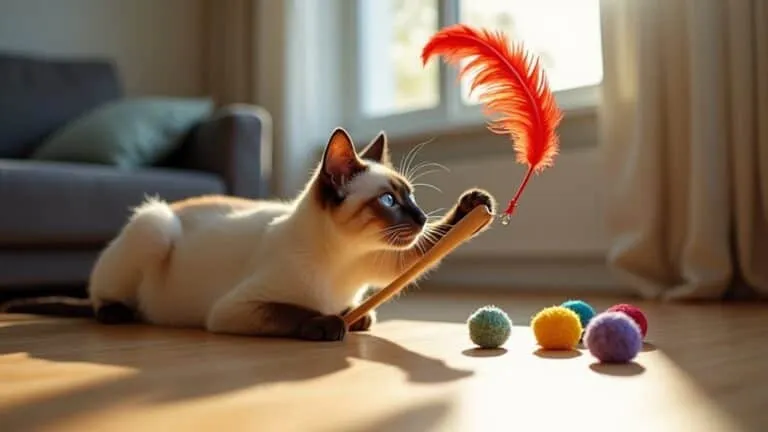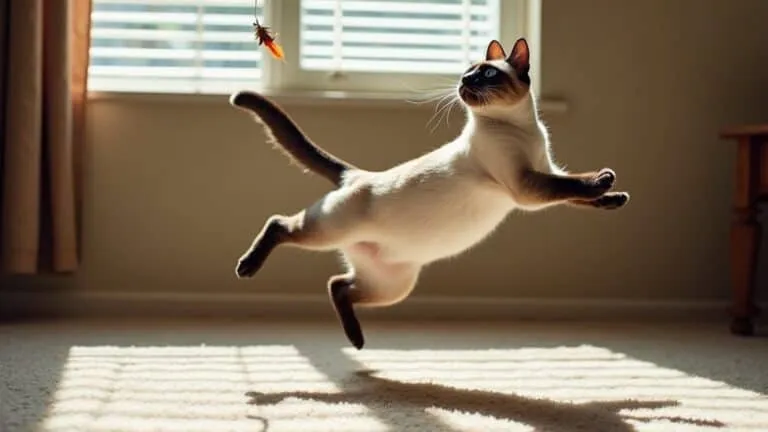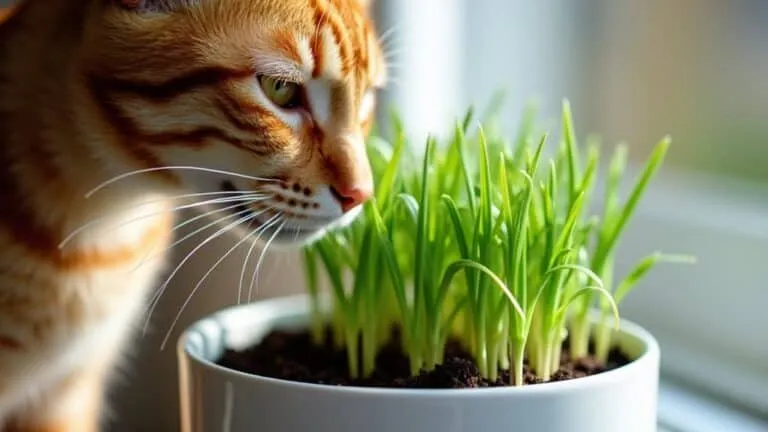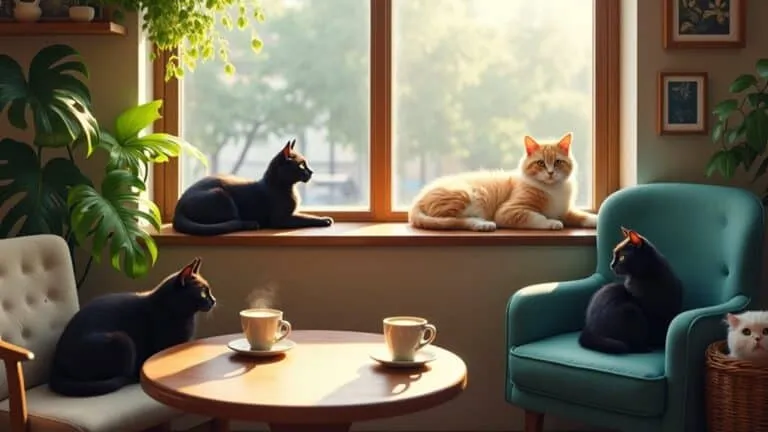The Best Fluffy Pancakes recipe you will fall in love with. Full of tips and tricks to help you make the best pancakes.
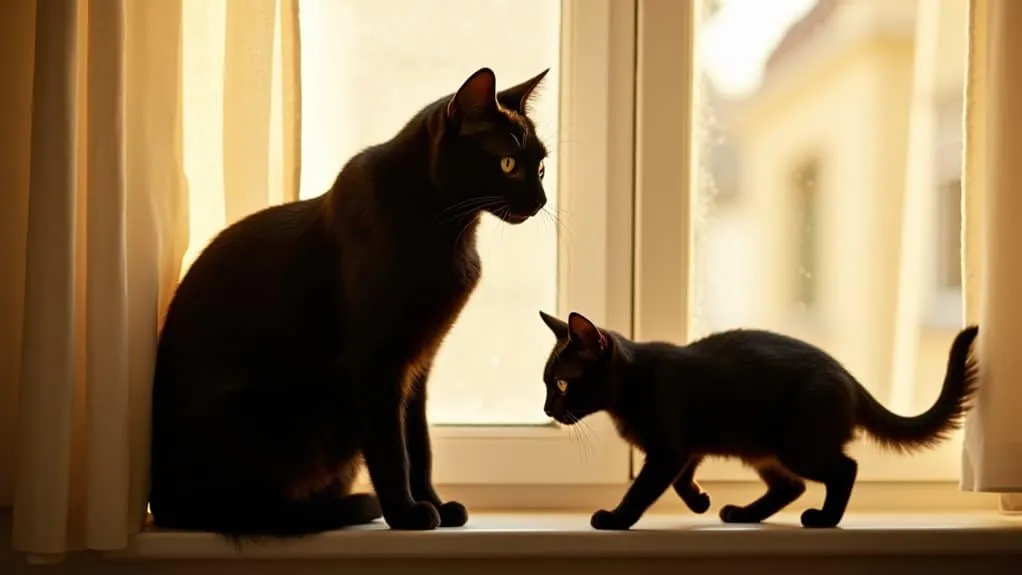
You've probably crossed paths with a black cat at some point and wondered if the old superstitions are true. Well, it's time to set the record straight about these sleek, ebony-coated felines who've gotten a bad rap throughout history. From being worshipped as gods in ancient Egypt to getting unfairly blamed for medieval misfortunes, black cats have quite the story to tell. Let's explore how these mysterious creatures went from divine beings to misunderstood companions, and why they might just be your perfect lucky charm.
The Origins of Black Cat Superstitions
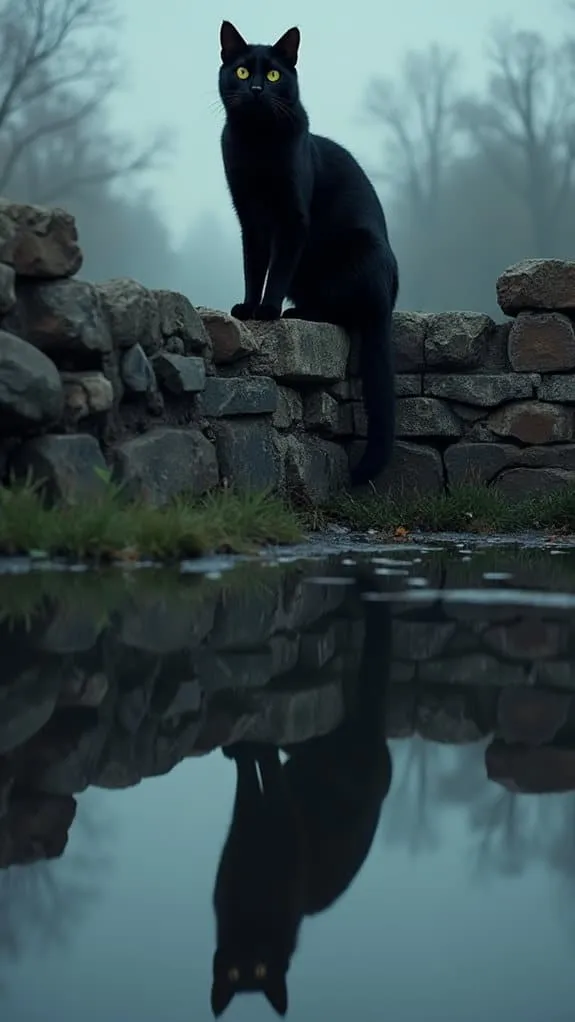
While most of us today might roll our eyes at superstitions, the dark reputation of black cats originated during Europe's tumultuous Middle Ages. The historical significance of these beliefs took a drastic turn in 1233 when Pope Gregory IX declared black cats to be incarnations of Satan himself. This proclamation sparked widespread fear and persecution across Europe.
You might be surprised to learn that medieval Christians viewed black cats as symbols of paganism and dark forces. Their nocturnal nature and ability to move silently in darkness only fueled these fears. Ancient Egyptians had actually worshipped cats as sacred beings. In fact, the ownership of a black cat could lead to death by execution during this period of intense paranoia.
The persecution became so severe that countless black cats were killed, leading to an unfortunate chain of events – as the cat population declined, the rat population soared, contributing to the spread of the devastating Bubonic Plague.
Ancient Egyptian Worship of Black Cats
In stark contrast to medieval Europe's fear of black cats, ancient Egyptians celebrated these mysterious felines as divine beings worthy of profound respect and admiration.
You'll find ancient cat symbolism woven throughout Egyptian culture, where cats served as protectors against snakes, rodents, and crop-destroying birds. They were revered not only for their hunting prowess but also for their significance in human relationships, as their presence often brought comfort and companionship.
The most fascinating aspect of feline divinity centered around Bastet, the cat-headed goddess who brought protection, pleasure, and good health to her followers. She rode with Ra daily as he pulled the sun across the sky in his boat.
You'll be amazed to learn that killing a cat was considered such a serious crime that one unfortunate Roman was lynched for this offense!
Cats were so treasured that they wore golden jewelry, dined from their owners' plates, and after death, were carefully mummified in special cat cemeteries.
Talk about the ultimate pet parent experience!
The special relationship between cats and humans began when felines self-domesticated around 10,000 BCE as they entered agricultural societies to control rodent populations.
Medieval Misconceptions and Witch Trials
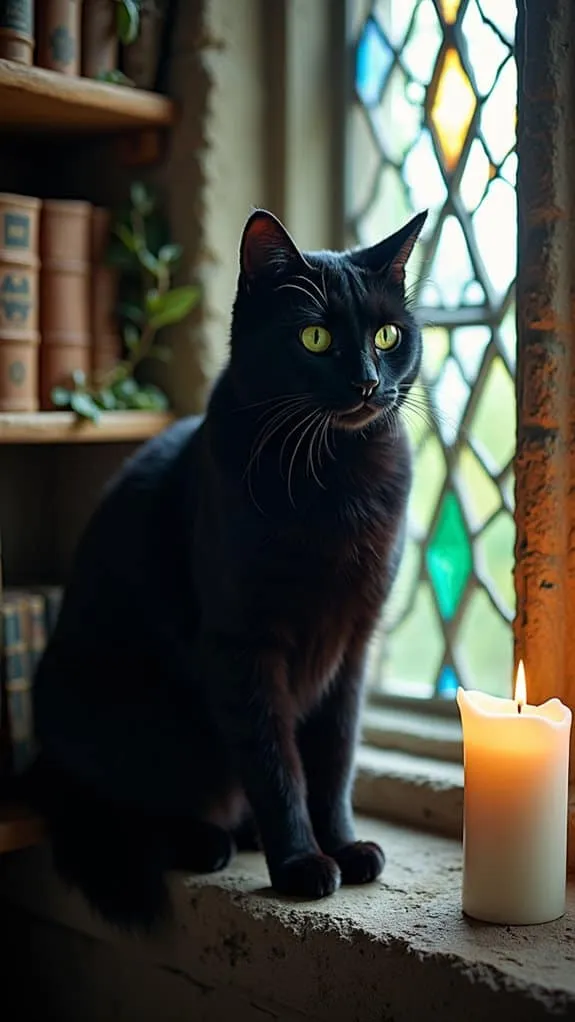
You'll be surprised to learn that black cats' fall from grace happened during the medieval period, when religious leaders started linking them to witchcraft and dark magic.
If you'd lived in medieval Europe, you might've witnessed the tragic persecution of these innocent animals, as they were often burned or killed alongside accused witches during the infamous witch trials. The extinction of paganism contributed significantly to society's growing distrust of cats.
This persecution contradicts ancient beliefs, as Egyptian culture once held black cats in the highest regard.
The hysteria became so intense that many people honestly believed black cats were either witches in disguise or their evil supernatural companions, leading to widespread fear and persecution that would last for centuries.
Origins of Witch Association
During medieval times, black cats became the unfortunate targets of dark superstitions and fear, particularly as people started connecting them to witchcraft and evil spirits.
You'll find that much of this feline folklore stemmed from the Catholic Church's influence, especially after Pope Gregory IX's papal bull that linked black cats to satanic practices. The witchcraft symbolism grew stronger as people became increasingly suspicious of these beautiful creatures' nocturnal nature. These negative associations led to extreme persecution of black cats throughout Europe. The cultural significance of cats in Greece further illustrates humanity's complicated relationship with felines across history.
When you look at the historical records, you'll see that medieval Europeans truly believed black cats were demons in disguise or vessels for the devil. Historical accounts from the Salem Witch Trials show that Tituba saw two cats who allegedly spoke to her during an examination.
It's hard to imagine how these misconceptions spread so widely, but the Church's active promotion of anti-cat propaganda played a significant role in cementing these unfounded fears throughout society.
Religious Persecution and Hysteria
Religious hysteria reached a fever pitch when Pope Gregory IX issued the infamous "Vox in Rama" papal bull in 1233, marking the beginning of a dark chapter for black cats throughout medieval Europe.
Historical records show the document was actually limited to five copies and only addressed a specific region in Germany.
The combination of religious symbolism and cultural beliefs led to widespread persecution, as people believed these mysterious felines were in league with the devil.
During the Bubonic Plague, black cats faced even more severe persecution as they were falsely blamed for spreading the disease.
During this tumultuous period, you'd have witnessed some truly tragic events:
- Church officials encouraging the burning of black cats alongside accused witches
- Local festivals, like Belgium's Kattenstoet, featuring ritualistic cat killings
- The spread of false confessions obtained through inquisitorial torture
- Communities hurling cats from church belfries in misguided attempts to defeat evil
Sadly, these superstitions traveled to the New World, where they continued to affect both cats and their human companions during events like the Salem witch trials.
Cats During Witch Trials
While medieval Europe grappled with widespread paranoia about witchcraft, black cats found themselves at the center of a terrifying crusade that would shape their reputation for centuries to come.
During the witch trials, you'd find that these innocent felines became entangled in a web of dark feline folklore and dangerous superstitions. Pope Innocent VIII's 1484 declaration of cats as "the devil's favorite animal" only fueled the hysteria, leading to widespread persecution of both cats and their human companions.
If you lived in those times, you'd witness how the Catholic Church and Puritan societies viewed black cats as shape-shifting witches or demonic familiars. This tragic misunderstanding led to thousands of cats being killed, particularly during religious festivals like the feast of St. John. Moreover, many people were unaware that cat allergies could result in severe reactions to the very animals they mistakenly vilified.
Black Cats Across Different Cultures
Throughout human history, you'll find that black cats have stirred up powerful emotions and beliefs across vastly different cultures. Their cultural symbolism ranges from divine protectors to harbingers of doom, while superstitious beliefs have shaped how different societies treat these mysterious felines.
- In ancient Egypt, you'd face death for harming a black cat, as they were seen as sacred beings connected to the goddess Bastet.
- Japanese culture embraces black cats as lucky charms that can help you find love and ward off evil spirits.
- Sailors have long welcomed black cats aboard their ships, believing they bring good fortune at sea.
- Western European traditions sadly led to fear and persecution, though modern attitudes are becoming more positive.
In the present day, raising awareness of FeLV is essential for protecting not only black cats but all felines from the silent killer threatening their health and safety.
Today, you're part of a growing movement that's helping to change these misconceptions and celebrate these beautiful creatures for who they truly are.
The Science Behind Black Cat Genetics
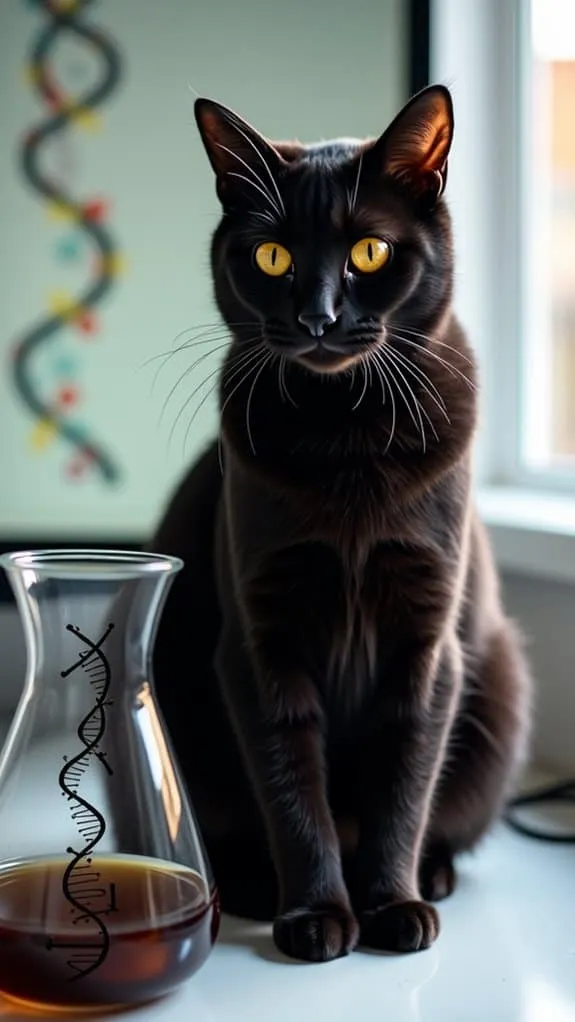
You'll find that black cats get their striking appearance from a fascinating genetic trait that boosts melanin production.
When you look at a black cat's family tree, you'll notice this dominant gene doesn't skip generations, which means one of the parents must have been black or carried the gene.
The genetic science behind these mini panthers is even more impressive because the same genes that create their beautiful black coats also help strengthen their immune systems.
Dominant Melanin Gene Expression
The science behind a black cat's stunning coat color lies in a fascinating genetic dance of dominant and recessive genes. When you look at a black cat's luxurious fur, you're seeing the result of dominant melanin expression at work. The process involves specific genetic variations that create that rich, dark coat you've come to love.
- The dominant B allele produces black eumelanin, giving cats their midnight-colored fur.
- Both parents must pass down this dominant gene for a pure black coat.
- Special melanocytes create pigment granules under strict genetic control.
- The recessive agouti gene helps by suppressing tabby patterns.
You'll find it amazing how these genes work together, like a perfectly choreographed dance, to create your black cat's beautiful coat.
Nature's genetic blueprint guarantees that each black cat is a unique masterpiece of feline genetics.
Color Inheritance Patterns
Your cat's color inheritance depends on two primary colors – black and red/orange – with genetic variations creating the stunning diversity you see in feline coats today.
If you've noticed your female cat displaying multiple colors, that's because she inherits coat colors from both parents through her X chromosomes. Male cats, however, get their coloring solely from mom!
Your black cat's deep, rich coat comes from dominant melanin genes, and if they've got those mesmerizing yellow or copper eyes, that's also thanks to their melanistic genes. Interestingly, the grooming needs of black cats can vary depending on their breed, highlighting the importance of breed selection in caring for your feline friend.
It's amazing how nature has crafted such perfect combinations through these complex genetic codes.
Common Modern-Day Myths About Black Cats
Throughout history, fascinating myths and superstitions about black cats have woven themselves into our cultural fabric, shaping how we perceive these mysterious felines today.
While medieval times linked black cats to witchcraft and bad omens, you'll find that many cultures actually celebrate these elegant creatures as symbols of good fortune.
- Lower black cat adoption rates stem from lingering superstitions and misleading photographs
- Ancient Egyptians revered black cats, seeing them as divine representations of Bastet
- In Japan, black cats are considered matchmakers for single women seeking love
- Scottish tradition views a black cat at your doorstep as a sign of incoming prosperity
Don't let old myths cloud your judgment – these beautiful animals deserve the same love and consideration as any other cat.
Interacting with black cats can dramatically improve your emotional well-being by providing health benefits through companionship and affection.
You'll often find that meeting a black cat in person quickly dispels any lingering doubts about their charm and personality.
Black Cats in Maritime and Wedding Traditions
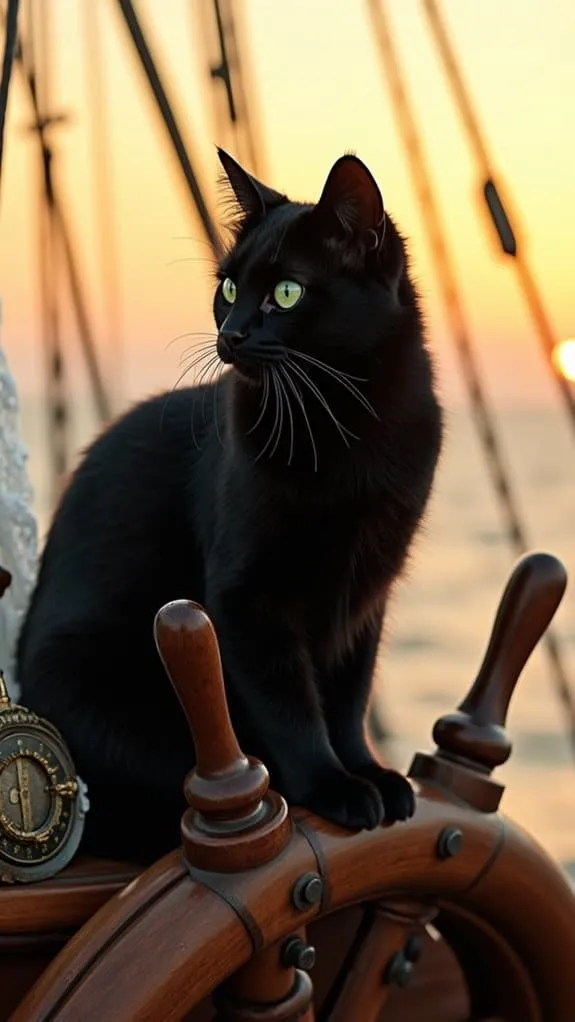
While black cats have faced their share of superstitions on land, you'll find their reputation takes a surprisingly positive turn at sea and in matters of love.
Maritime symbolism surrounding these mysterious felines shows how sailors cherished them as both companions and protectors against rodents during long voyages. You might be amazed to learn that Viking and Mediterranean sailors helped spread their positive influence across cultures.
When it comes to wedding good luck, English traditions have embraced black cats wholeheartedly.
If you're planning your special day, you might want to contemplate this charming custom: some brides carry horseshoes decorated with black cat motifs in their bouquets, while others welcome these elegant creatures into their homes as guardians of marital bliss.
These traditions remind us that sometimes, the most misunderstood symbols can bring the greatest fortune.
The Truth About Black Cat Personalities
- They're often incredibly affectionate and love spending time on their human's lap.
- Their intelligence and playfulness shine through in daily interactions.
- Each black cat develops its own personality based on genetics and experiences.
- They're just as likely to be outgoing or shy as any other cat.
- Studies show that black cats, like all cats, experience oxytocin release during interactions with humans, which strengthens their emotional
Final Thoughts
Isn't it time we put these outdated myths about black cats to rest? You've now learned how these magnificent creatures have enriched cultures worldwide, from ancient Egypt's divine worship to sailors' lucky companions. Whether you're considering adoption or simply expanding your knowledge, remember that black cats aren't harbingers of misfortune – they're loving, intelligent pets who'll bring joy and companionship to your life, just like any other feline friend.

